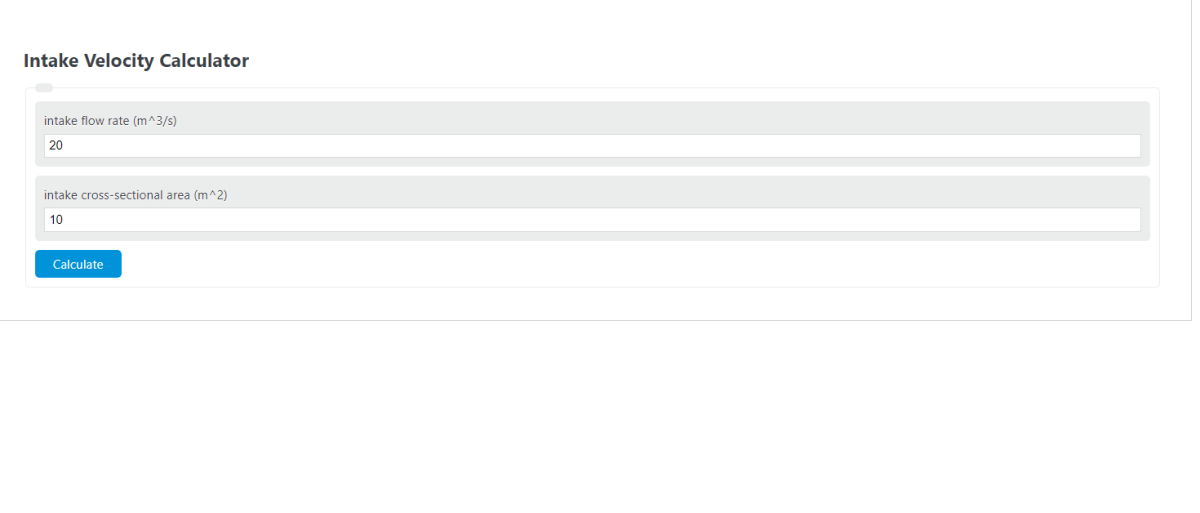Enter the volumetric flow rate through the intake and the intake area into the calculator to determine the intake velocity.
- All Velocity Calculators
- Exhaust Velocity Calculator
- Exhaust Diameter Calculator
- Propeller Thrust Calculator
Intake Velocity Formula
The following equation is used to calculate the Intake Velocity.
IV = IFR / IA
- Where IV is the intake velocity (m/s)
- IFR is the intake flow rate (m^3/s)
- IA is the intake cross-sectional area (m^2)
To calculate the intake velocity, divide the intake flow rate by the intake cross-sectional area.
What is an Intake Velocity?
Definition:
A intake velocity is a measure of the speed at which air moves through an intake.
How to Calculate Intake Velocity?
Example Problem:
The following example outlines the steps and information needed to calculate Intake Velocity.
First, determine the intake flow rate. In this example, the intake flow rate is found to be 20 m^3/s.
Next, determine the intake cross-sectional area. For this problem, the intake cross-sectional area is found to be 10 m^2.
Finally, calculate the Intake Velocity using the formula above:
IV = IFR / IA
IV = 20 / 10
IV = 2 m/s
FAQ
What factors can affect intake velocity in a system?
Several factors can affect intake velocity, including the design and size of the intake, the flow rate of the medium being taken in, environmental conditions such as temperature and pressure, and any obstructions or modifications within the intake path that could alter flow dynamics.
Why is it important to calculate intake velocity?
Calculating intake velocity is crucial for designing efficient systems in various applications, such as ventilation, engine performance, and fluid dynamics systems. It helps in ensuring optimal flow rates, preventing system overloads, and maintaining the desired performance levels.
Can intake velocity be increased, and if so, how?
Yes, intake velocity can be increased by several methods, including reducing the cross-sectional area of the intake (which increases velocity according to the continuity equation), increasing the flow rate, or optimizing the intake design to reduce resistance and turbulence within the intake path.
